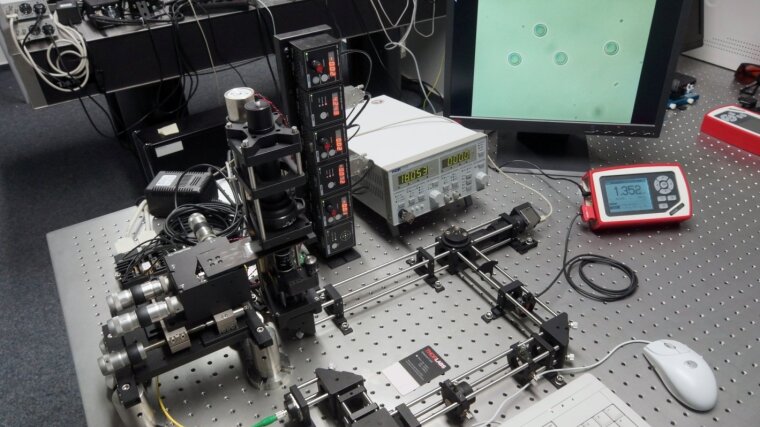Optical Tweezers
Micrometer-sized particles can be trapped and moved by strongly focused light due to reflection and refraction of the incident photons. The effect can be used to control and manipulate transparent microscopic particles like polymer microspheres, microorganisms or cells.
